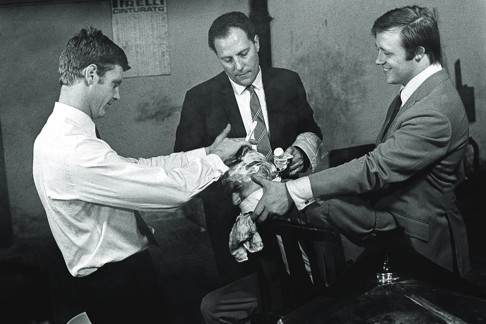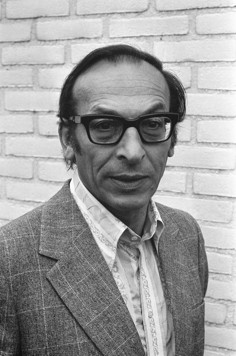
Book review: Jumpin’ Jack Flash tries to pin down David Litvinoff, secretive ’60s figure
The shadowy Litvinoff seemed to know everyone in Swinging London, from East End gangsters to artists to rock legends – but literally nothing he left behind is trustworthy or reliable


by Keiron Pim
Jonathan Cape

Who was David Litvinoff? To certain aficionados of London in the 1960s, his is a fabulously enigmatic name that connects discrete worlds whose collisions created the seismic social upheavals of that decade. He knew the Krays and the Stones, Lucian Freud and Peter Rachman, Eric Clapton and George Melly, and a whole gallery of aristocrats, rock stars, artists and criminals.
He contributed to the William Hickey gossip column in the Daily Express, was doorman at a Soho clip joint, and was “dialogue adviser” and “technical consultant” on Donald Cammell and Nicolas Roeg’s cult film Performance, in which Mick Jagger and James Fox trade psychic places as rock god and gangster. But more than anything he was a raconteur, a brilliant storyteller and fabulist who played court jester to the Chelsea set of the 1960s.

As a consequence, as Pim readily acknowledges, it’s extremely difficult to establish what’s true and what’s legend. Was Litvinoff the tremendously influential cultural figure behind the scenes that others before Pim, including Iain Sinclair, have investigated? Or was he just an East End spieler, prodigious networker and charming social parasite on the make?

Homosexual and headstrong, he was drawn first to society’s margins – the East End criminal underworld and the illicit hedonism of Soho – before finding his way into society. He was no stranger to violence, both that which he inflicted on others and that which he suffered himself. When the Rolling Stones were arrested on drugs charges in 1967, Litvinoff and part-time actor and full-time thug John Bindon badly beat up a young man Litvinoff wrongly suspected of being the informer. They hung him out of a window by his ankles.
Litvinoff himself suffered the same fate and was once slashed so badly across his face that his mouth was shaped into a horrific smile. The Krays were (probably incorrectly) blamed for that piece of macabre theatre, even though Litvinoff and Ronnie Kray once shared a lover and briefly a flat. But it’s also been suggested that painter Lucian Freud commissioned the crime. The two men fell out after Freud painted Litvinoff in a portrait he entitled The Procurer. Like so much about Litvinoff’s life, there is no way of knowing what the reality was.
This is both the strength and weakness of Pim’s fascinating biography. In the absence of documentary evidence, Pim is left with a near limitless canvas of possibilities. At one stage he writes despairingly of his efforts to unearth the truth. “Everything began to connect, or rather held the promise of connection if I would only look hard enough.” He speaks of “apophenia”, “the experience of perceiving meaningful patterns in random phenomena”.
In the end, as he approached his 50s, increasingly estranged from the worlds in which he’d once been a fixture, he killed himself at his friend Christopher Gibbs’ house, Davington Priory in Kent. The house was later bought by Bob Geldof. That’s just the sort of connection that made up Litvinoff’s life: curious but, sadly, meaningless.
The Guardian